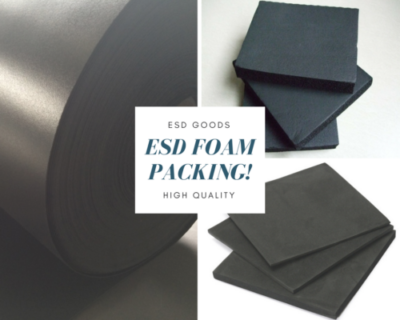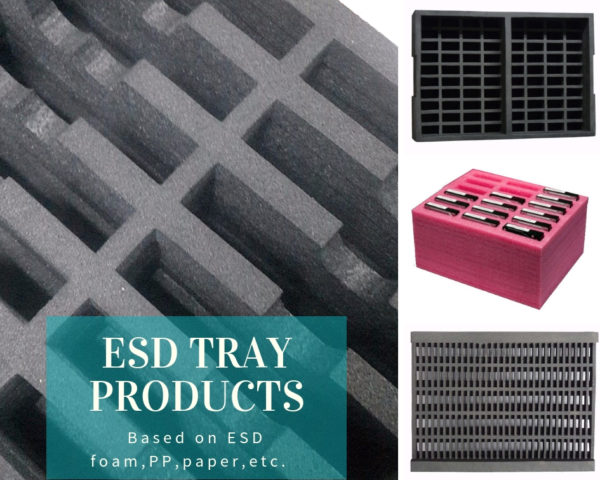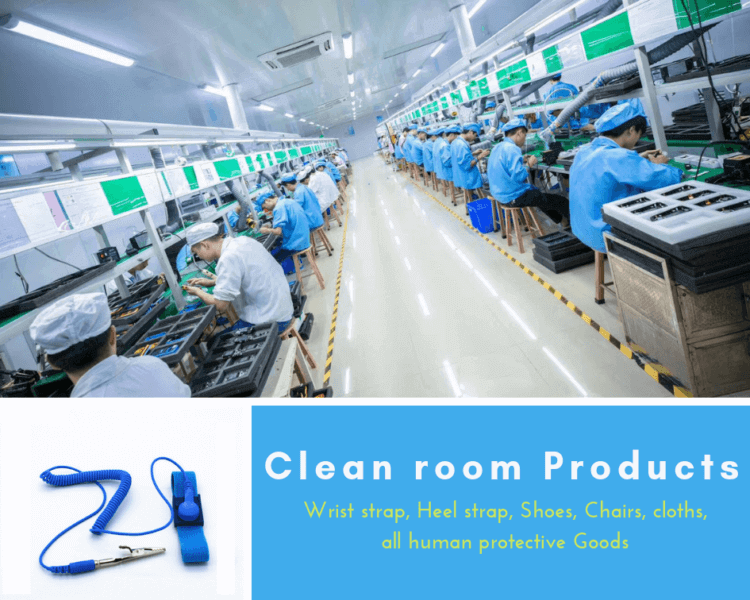Anti Static Foam Sheet EVA Foam vs PE Foam vs PU Foam
Anti Static Foam Sheet is produced by mixing raw material with color master, AC agent, foaming agent, some special padding, then foaming to be the anti static foam sheet. because it’s soft and cushioning foam, widely used for ESD packaging.
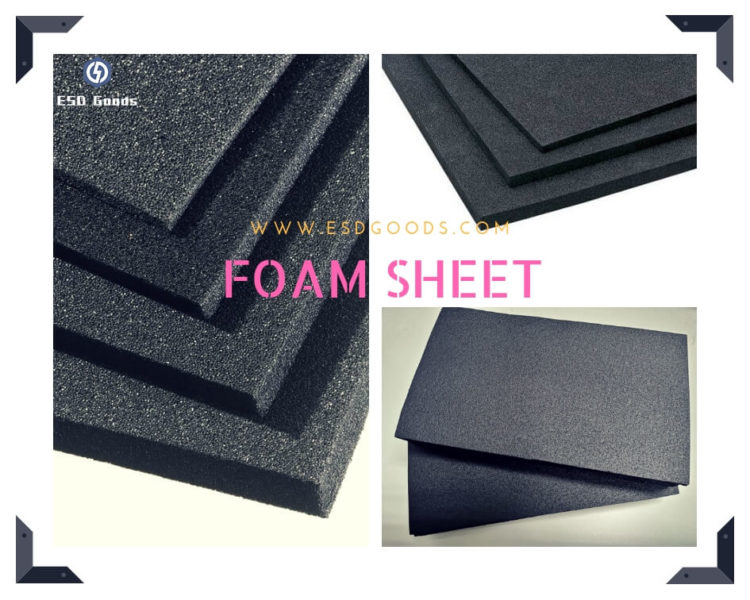
Understanding Anti-Static Foam Sheets: A Comprehensive Guide
In today’s world, where technology is advancing rapidly, electrostatic discharge (ESD) can be a major concern for sensitive electronic components. To reduce this risk, Anti-static foam sheets are essential for providing protection and ensuring the safe handling and transportation of electronic devices. In this article, we’ll discuss the various types of anti-static foam sheets, such as PE foam, PU foam, and EVA foam, and compare their features and applications. This will help you make an informed decision for your ESD control needs.
Anti-Static PE Foam Sheet
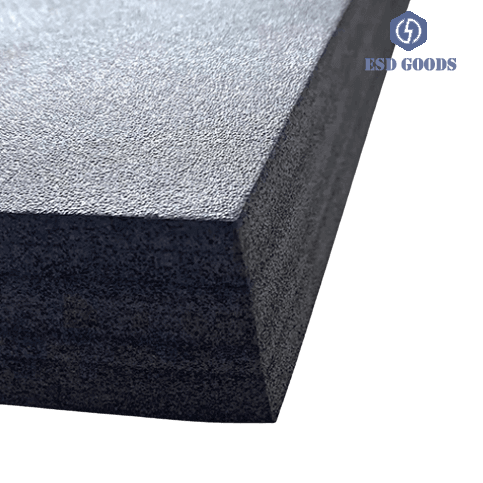
Anti-static PE foam, also known as ESD polyethylene foam, is a highly versatile material that is widely used in various industries. Its excellent shock-absorbing and cushioning properties have made it an ideal choice for packaging, transportation, and storage of sensitive electronic components. The Anti static PE foam is designed to dissipate static charges, thereby providing reliable ESD protection. Unlike other foam materials, anti-static PE foam sheets are non-toxic, odorless, and eco-friendly.
When it comes to packaging and transporting electronics, it is essential to ensure that the products are safe from damage caused by static electricity. This is where Anti-static PE foam sheets come in handy. They are specifically engineered to provide long-term anti-static protection, making them ideal for use in the electronics industry. Not only do they protect products from damage, but they also ensure that they arrive at their destination in perfect working condition.
Apart from their use in the electronics industry, Anti-static PE foam sheets have found use in other industries, such as the automotive industry. They are used for insulation, soundproofing, and vibration damping in automobiles. The foam’s excellent cushioning properties make it perfect for use in car seats, headrests, and armrests.
Anti-Static PU Foam Sheet
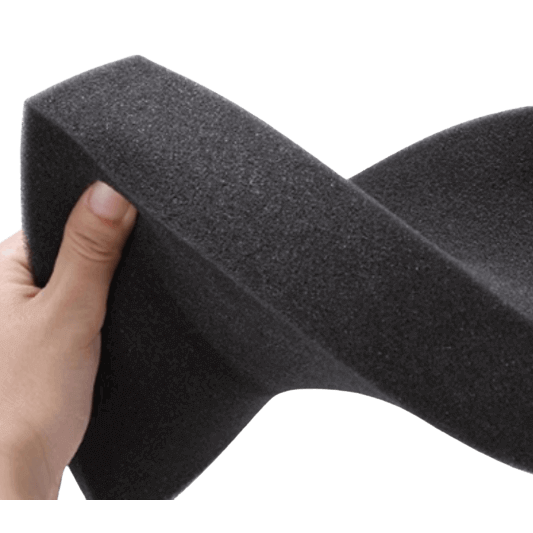
Anti-static PU foam, also known as ESD polyurethane foam, is a popular option for ESD protection. These foam sheets are designed to prevent the build-up of static charges, which can cause damage to sensitive electronic components. They offer superior cushioning and shock resistance, making them ideal for the safe shipment of delicate electronic devices.
Anti-static PU foam sheets are made from high-quality polyurethane foam that has been treated with an anti-static coating. This coating helps to dissipate static charges, making it safe to transport electronic devices without risking damage from static electricity. Additionally, the foam itself is highly durable and resilient, ensuring that it can withstand the rigors of transportation and handling.
Because of their excellent properties, anti-static PU foam sheets are widely used in a variety of industries, including electronics manufacturing, automotive, and aerospace. In electronics manufacturing, they are used to protect components during transport and storage. In the automotive industry, they are used to protect delicate electronic components in vehicles. And in the aerospace industry, they are used to protect sensitive equipment during space missions.
Overall, anti-static PU foam sheets are an excellent choice for anyone looking to protect delicate electronic components during transport or storage. With their superior cushioning and anti-static properties, they offer peace of mind and ensure that your electronic devices arrive safely at their destination.
Anti-Static EVA Foam Sheet
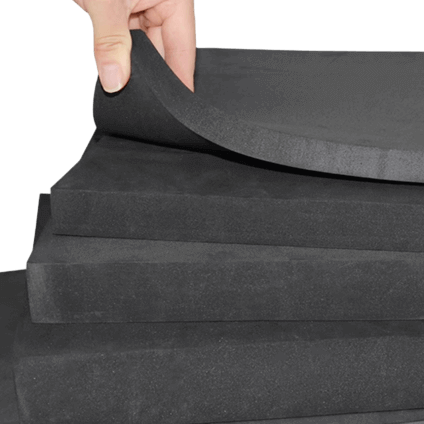
Anti-static EVA foam, also known as ESD ethylene-vinyl acetate foam, is a versatile material that is widely used across diverse industries for various applications.
This lightweight and flexible material is well-known for its excellent impact resistance, making it an ideal choice for applications where fragile electronic components need the utmost protection. The foam sheets provide effective static dissipation, making them suitable for applications where ESD control is crucial.
Apart from its static dissipation properties, EVA foam sheets also offer a balance between cushioning and conductivity, making them ideal for protecting electronic components during handling, shipping, and storage. The foam’s versatility allows for customization and easy fabrication to meet specific requirements, making it an attractive option for manufacturers and designers alike.
From aerospace applications to medical devices, EVA foam sheets are used in a wide range of industries. They are used as padding in helmets, knee pads, and other safety gear for athletes. They are also used in electronic packaging and transportation, where they protect sensitive electronic components from damage caused by static electricity.
Anti-static EVA foam sheets are a cost-effective and reliable option for those who require effective ESD control, cushioning, and protection for their electronic components.
Comparison of Anti-Static Foam Sheets
When it comes to Anti static foam sheets, there are various types to choose from, each with its own unique properties. Anti-static properties are a feature that above three types of foam sheets have in common. However, it’s essential to note that there are notable differences to consider when choosing between them.
Anti Static PE foam sheets are a popular choice because of their shock-absorbing capabilities and customization options. They are also lightweight, which makes them a great option for applications where weight is a concern.
On the other hand, Anti static PU foam sheets are well-known for their superior cushioning and impact resistance. This makes them an excellent choice for heavy-duty applications, where protecting the contents from impact is crucial.
Anti static EVA foam sheets provide a balance between protection and static dissipation, thanks to their flexibility and conductivity. This makes them an excellent choice for applications where both protection and static dissipation are crucial.
It’s important to note that the suitability of each foam type for specific applications is influenced by various factors such as material composition, conductivity levels, and physical characteristics. By considering these factors, you can choose the best foam sheet for your specific needs and ensure that your contents remain safe and protected.
What is the Similarity and Difference between Anti-static EVA Foam and Anti-static PE Foam?
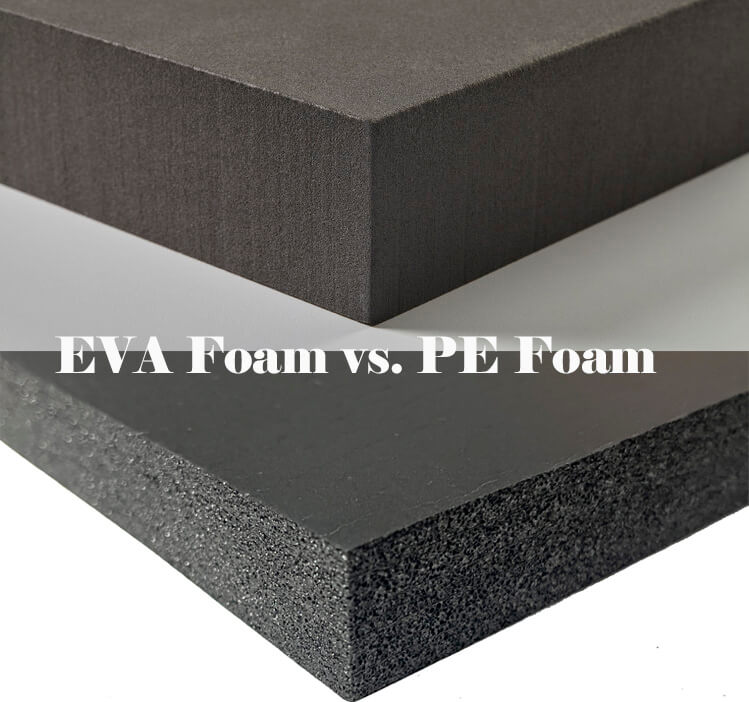
Differences
- Raw materials: Anti-static PE foam made of PE, and Anti-static EVA foam made of PE and ethylene vinyl acetate and other additives. Anti static PE foamdoes not produce formamide in the production process, compared with EVA foaming material, PE foaming material has no odor is safer and more environmentally friendly.
- Production methods: Anti-static PE foam production is continuous sheet foam, while Anti-static EVA foam material is foamed in a fixed size mold.
- Foam density: Regular density of Anti-static EVA foam is 85kg/m3, while the Regular density of Anti-static PE foam in 45kg/m3. Anti-static EVA hardness is higher than PE foam, better molding.
- Foam color: Regular color of Anti-static PE foam is black, Regular color of Anti-static EVA foam is black, blue, red and so on.
Similarities
- Both are closed-cell structure of the permanent anti-static foam
- Both Can be made into anti-static foam rolls, sheets, trays, liners, foam tape and so on.
- Both applied in anti-static protection
Choosing the Right Anti-Static Foam Sheet
When choosing an anti-static foam sheet, it’s important to consider several factors.
First, determine the level of ESD protection you need for your specific application, keeping in mind the sensitivity of the components involved.
Next, evaluate the material properties, including density, thickness, and conductivity, to ensure they meet your requirements. It’s also a good idea to consult with reliable suppliers or ESD experts who can offer guidance tailored to your needs.
By understanding the application and the performance characteristics of the foam, you can make an informed decision.
Anti-static foam sheets are essential components in the protection of sensitive electronic devices against electrostatic discharge. ESD PE foam, ESD PU foam, and ESD EVA foam sheets offer various benefits and applications for ESD control. By understanding their differences, features, and applications, you can select the most suitable foam sheet for your specific needs. Whether you require shockproof packaging, cushioning during transportation, or long-term static dissipation, anti-static foam sheets provide the necessary protection, ensuring the safe handling and preservation of electronic components in today’s high-tech world.
Anti Static Foam Sheet Applications
A. Optoelectronic components.
① Passive devices: couplers, jumpers, amplifiers, single-fiber bi-directional assemblies, etc;
② Active devices: transmitter module, receiver module, transceiver module, single-fiber bidirectional module;
③ diodes and components: light-emitting diodes, photodiodes, laser diode components, etc;
④ CATV components: components for optical reception, components for backhaul, laser diode components, etc.
B. Liquid crystal industry.
① Display components: displays, monitors, etc;
② Control circuit: control module, backlight module, etc;
C. Optical lens, lens industry.
① lenses, lenses for digital cameras, etc;
② Optical communication grating, filter, etc.
Applications in the microelectronics industry
A. Semiconductor industry:
① Applications in the Wafer/Wafer industry: packaging box liner;
② Integrated circuits: digital ICs, linear ICs, monolithic ICs, thick film ICs, ICs containing MOS, hybrid ICs, etc.; their characteristics are related to the packaging mode;
③ semiconductor tubes: diodes, transistors/transistors, gates, etc;
(iv) MOS structured components: CMOS, DMOS/EMOS, NMOS, VMOS, HMOS; some can be prevented by designing protection circuits;
B. PCBs and various boards in.
① PCBs and boards containing the aforementioned components:
② Modules and devices containing the aforementioned components, such as light source modules, optoelectronic modules, communication modules, IGBT modules, etc.;
C. The use of the aforementioned components, boards, modules for packaging of electronics, communications industry
① cell phones, computers / especially notebooks, high-definition TV and other consumer equipment
② Cable TV networks, IP, IT and other communications, video wired and wireless networks.
Applications in industries such as aviation, aerospace, communications, military munitions, chemical and chemical industries.

